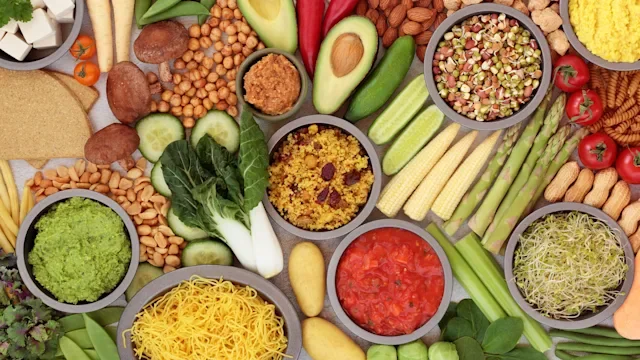Key takeaways:
Canned soup can be a nutritious, fiber-filled option when you need a quick meal. But some canned soups are more nourishing than others.
It’s important to look out for sodium content in soups. It’s best to choose one with less than 400 mg per serving.
If possible, get a soup with these three things: broth-based over creamy, a protein (like chicken, beans, or lentils), and a fiber source (like vegetables).
Canned soup isn’t just a staple for when you’re sick. It can be a nutrient-rich, convenient option when you need a meal that keeps you full and satisfied. It can also be a great way to add nutritious foods like vegetables, beans, and lentils to your diet.
But not all canned soups are created equal. We’ll explain what to look for and what to avoid when choosing a canned soup at your local grocery store.
What are the healthiest canned soups?
The most nutritious canned soups are those that are broth-based (versus creamy) and low in sodium and high in fiber. If the soup is the main part of your meal, it’s best to have some protein in there as well.
Here’s what these recommendations look like in practice:
Low sodium: Usually, this means anywhere from 100 mg to 400 mg of sodium per serving. (Note that the sodium content in “low sodium” soups can vary depending on the brand.)
High in fiber: Look for at least 4 g to 8 g of fiber per serving
Adequate protein: Aim for at least 5 g to 10 g of protein per serving (especially if your meal doesn’t have other sources of protein)
Here are some common canned soups that often meet these criteria. Note that this isn’t a comprehensive list. But this is a good place to start when comparing soup options back to back.
Minestrone soup
This soup uses a tomato-based broth and contains pasta, beans, and vegetables. It’s versatile and nourishing. And it can be a great way to add nutrients to your diet while also using up ingredients you may already have in your pantry and fridge. Both the beans and vegetables in minestrone soup contain fiber — which can help fill you up, lower cholesterol levels, and regulate blood sugar.
Vegetarian chili soup
Chili is more of a hearty stew than a soup. It’s dense with beans, tomatoes, and onions — and sometimes corn or other vegetables. Its robust taste comes from chili powder — a blend that includes cumin, garlic, and ground dried chili peppers. The beans in chili provide a plant-based protein as well as fiber. Plus, the tomatoes in chili have antioxidants like vitamin C and lycopene, which can help prevent cellular damage that causes chronic health conditions.
Vegetable barley soup
This soup uses a vegetable or chicken-broth base. But the star of this soup is barley — a hearty, high-protein grain. Barley also provides fiber, particularly if it’s hulled barley. This is a whole grain (as compared to “pearled barley,” which has less fiber). Look for options that include non-starchy vegetables like:
Broccoli
Carrots
Celery
Green beans
Kale
Zucchini
How to read nutrition labels: A dietitian explains what to pay attention to when trying to choose your healthiest food options.
Are all processed foods bad for you? It’s hard to avoid processed foods. But knowing which processed foods are the most harmful can help you build a balanced diet.
Looking to cut your salt intake? Salt isn’t always bad for you. But these surprising facts about sodium can help you make sure you’re getting the right amount.
Lentil soup
Lentil soup is another protein-rich option. And, like other legumes, lentils are packed with fiber. Just half a cup of cooked lentils provides almost one-third of your daily needs. Lentils also provide other nutrients like potassium, which benefits your blood pressure, and phosphorus, for bone health.
Split pea soup
Split peas are tiny green or yellow peas that naturally become split down the middle during harvesting. They’re an excellent source of both fiber and protein: Just half a cup of cooked split peas provides 8 g of each.
Butternut squash soup
This soup is made by cooking and pureeing butternut squash, typically with onion, garlic, and ginger. Butternut squash is rich in vitamin C — providing over a third of your daily needs in one cup. It also contains B vitamins, which help your body turn food into energy.
Read more like this
Explore these related articles, suggested for readers like you.
Miso soup
Miso soup is made with miso paste, which comes from fermented soybeans. Miso is a natural source of probiotics, which are beneficial bacteria that support a healthy gut. Miso may also support heart health. And miso soup often contains tofu, which is an excellent source of plant-based protein, iron, and calcium.
Chicken noodle soup
This classic comfort food also happens to be good for you. Many people turn to it when they have a cold, since it provides hydration and nutrients that may help with mucus secretions.
What should you watch for when buying canned soup?
One of the biggest things to watch for in canned soup is sodium content. Too much sodium can increase your risk of high blood pressure, heart disease, and stroke.
Many canned soups have 700 mg to 1,000 mg of sodium per serving. The American Heart Association recommends keeping your sodium intake below 2,300 mg per day. Ideally, it should be closer to 1,500 mg. This means that some soups contain over a third of your daily maximum intake in a single serving.
It’s also important to watch for saturated fat in canned soups. Some soups have a cream or cheese base, like broccoli cheddar, chowder, and bisques. This usually means they’re high in saturated fat — the type of fat that can increase your cholesterol and risk of heart disease. Try to find a soup that contains less than 4 g of saturated fat per serving.
Soups with higher saturated fat content are also usually more calorie dense. This may be important to people who want to be mindful of their calorie intake.
What are the least healthy canned soups?
The canned soup options that are less nutritious those that are:
High in sodium
High in saturated fat
Low in fiber
Low in protein
Some examples of soups that often fit this profile include:
Beef stew
Beef stroganoff
Broccoli cheddar
Chicken and dumpling
Clam chowder
Creamy tortellini
Creamy potato
Creamy tomato
Cream of chicken
Loaded baked potato
Remember, just because these soup options are less nutritious than other options doesn’t mean you have to rule them out entirely. Consider making them a side dish rather than the main course. You can also pair these soup options with other foods to fill in any nutritional gaps.
For example, you can try:
Pairing beef stew with whole grain bread
Adding fresh or frozen broccoli to broccoli cheddar soup
Eating grilled chicken salad with a side of creamy potato soup
You can tailor your meal to fit your own personal health needs.
Frequently asked questions
Some soups — particularly broth-based soups with high amounts of fiber and protein — can support weight loss. These soups can help fill you up with fewer calories. Examples of soups that may support weight loss are vegetable barley, miso, and lentil.
Soup can last about 3 to 4 days in an airtight container in the refrigerator. Be sure to heat leftover soup thoroughly before you eat it. It’s also a good idea to label leftovers with a date, to help you remember how many days it’s been there. If you aren’t sure, toss it.
The best way to make soup less salty is to make it yourself. That way, you can control how much salt you add. But when you’re buying canned soup, try to find low-sodium soups. Aim for soups with 100 mg to 400 mg per serving. You can also dilute soup by adding water, milk, or unsalted broth.
Some soups — particularly broth-based soups with high amounts of fiber and protein — can support weight loss. These soups can help fill you up with fewer calories. Examples of soups that may support weight loss are vegetable barley, miso, and lentil.
Soup can last about 3 to 4 days in an airtight container in the refrigerator. Be sure to heat leftover soup thoroughly before you eat it. It’s also a good idea to label leftovers with a date, to help you remember how many days it’s been there. If you aren’t sure, toss it.
The best way to make soup less salty is to make it yourself. That way, you can control how much salt you add. But when you’re buying canned soup, try to find low-sodium soups. Aim for soups with 100 mg to 400 mg per serving. You can also dilute soup by adding water, milk, or unsalted broth.
The bottom line
When it comes to canned soups, some are more nutritious than others. A small portion of any soup can fit into a well-balanced and nutritious diet. If canned soup becomes a more regular part of your weekly diet, try to choose options that are low in sodium and saturated fat. And look for soups that provide fiber, protein, and veggies.

Why trust our experts?



References
American Heart Association. (2025). How much sodium should I eat per day?
My Food Data. (n.d.). Cooked Butternut Squash (Baked).
My Food Data. (n.d.). Cooked Lentils (Boiled) (Mature Seeds).
My Food Data. (n.d.). Cooked Split Peas (Boiled) (Mature Seeds).


















